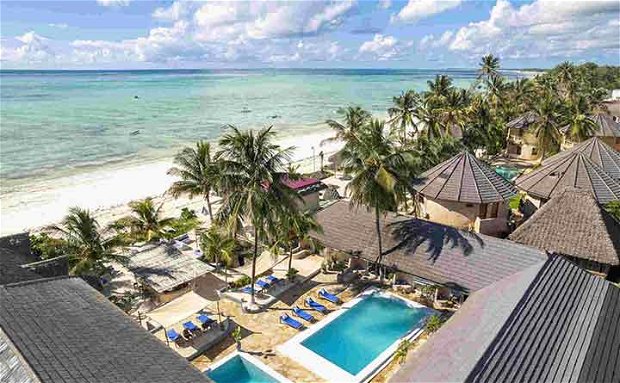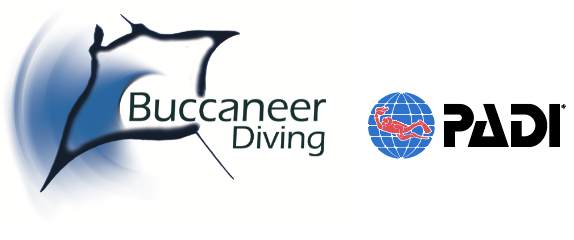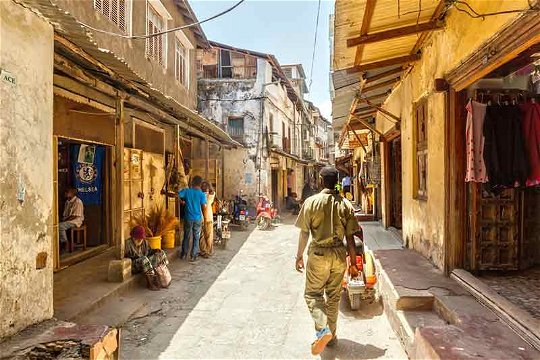PADI Divemaster & Instructor courses in paradise
Steve Brakers Zanzibar Trip

Zanzibar Beach Safari
Categories
African Safari, Diving Stories, East Africa
https://stevebrakerbooks.com/zanzibar-beach-safari/
Zanzibar Beach Safari
Categories
African Safari, Diving Stories, East Africa
As a lifelong traveler and very keen on scuba diving, I was so happy to have the opportunity to visit Zanzibar, one of the famous spice islands. In particular, a tiny village on the eastern side called Paje.
The occasion was brought on by cheap flights from Europe! Earlier this year my children had booked some horrendous flights that took them from London to Milan, then to Saudia Arabia, and finally Dar-Es-Sallam, all for about two hundred pounds. As they said over the phone, “An absolute bargain, and It will only take two days!”
Stone Town
With all the plans set, my wife, Pauline, and I set off on our short hop from Mombasa to Zanzibar. Our first point of call is always Stone Town. The narrow winding lanes, that weave between the whitewashed houses all bustling with old wooden pushcarts, and hawkers selling all manner of goods from fish to the ever-present spices. As the early morning rays of the sun penetrate the darkened alleyways, it is easy to imagine walking the same cobbled streets with the likes of Dr. Livingstone or Sir Henry Morton Stanley.
Zanzibar Taxi
However, we didn’t have time to hang around the stalls or chat with the merchants this time around. We were on a mission. We hailed a cab for Paje, a small town on the eastern side of Zanzibar. After fifteen minutes of animated haggling, we got the price down to thirty-five dollars, so we hopped in and took off. The journey across the island takes about one and a half hours. It passes alongside the Jozani Chwaka Bay National Park where the red colobus, procolobus kirkii, live. They are beautiful grey and white creatures with red faces and dark eyes. They live high up in the branches, out of sight most of the time, but there are areas where you can spot their white coats among the green leaves of the lower trees. It’s also rumored that the Zanzibar leopard also haunts the shadows. The leopard was considered extinct and may well be, as it has not been seen since 2003. But we can all hope that they are still hiding in the shadows of the thick forest undergrowth. Living their best lives.
Paje
Paje was a sleepy little fishing village that sat on an idyllic soft, white, sandy beach where the tide seemed to go out forever. The Swahili ladies wrapped in their black bui buis working in the shallows sorting through long lines of red seaweed. They harvested the best in baskets and bags that they carried on their heads back to the village where it was sorted, cleaned, and sold. You would be amazed, but the seaweed has very high amounts of carrageenan, an emulsifying agent, used in chicken sausages, yogurt, beer, soap, and toothpaste to name but a few. However, that has all changed, the tourists have arrived, and although Paje still keeps a considerable amount of charm the main drag is lined with restaurants the patrons sitting right on the edge of the tarmac as trucks honk their horns and motorcycle taxis roar past. We were looking for some good biriani; a typical Swahili dish, or samosas; small triangular pockets of meat wrapped in rice flour, but we were offered Moroccan, Indian, Egyptian, and Italian food.
Get My African Thrillers Now
Our hotel, Paje Beach Apartments, was set just behind the village along a narrow alley ending on the white sand of Paje Beach. The rooms are well-appointed, and clean, with good wi-fi, fresh drinking water, and very friendly staff. We took a two-bedroom apartment with a small kitchen. We left our shoes in the apartment and immediately headed to the beach bar and restaurant for a delicious fish lunch washed down with freshly made healthy juices from the juice bar. We were lucky as the following night was Swahili night with music and food.
Paje Beach
Paje Beach is a tranquil, white sandy beach with a low reef about one kilometer off the shore. The tidal range is huge, the water disappears off into the distance leaving a vast plain of white powdery sand. The Kusi; the southerly monsoon, and the Kaskazi; the easterly monsoon, bring a strong in-shore wind that creates a mecca for water sports. Kite surfing has taken over the area. As the tide creeps in it creates a shallow lagoon of almost flat water in places only inches deep. The kite surfers race across the shallow water doing death-defying tricks, spinning in the air and landing effortlessly back on two feet. If you are lucky and the tide is coming in, you can sit in the Paje Beach Apartments bar with a cold Kilimanjaro in your hand and marvel at the antics of these highly skilled aviators or sailers. I am never sure which!
The Zanzibarians are friendly and helpful, without being overly beach boyish. There are cashew nuts and coconuts for sale from wandering vendors. Everything is negotiable, so you get a free conversation thrown in!
Night Life
In the evening, the beach turns into a main drag with tourists mingling with the Zanzibarians all promenading as dusk turns to night and the stars fill the sky. The evening nightlife begins. There are several bars dotted along the beach where revelers can have a great meal, a few beers, and enjoy the welcome, cool, onshore breeze before turning in. Although Kilimanjaro larger is nice, the fresh fruit juice or coconut cream cocktails are to die for, and the fish, prawns, octopus, and squid straight from the ocean are always available for bitings.
We went to bed early as the following day we had two dives planned with Buccaneer Diving, a Padi Five-Star dive center attached to the hotel.
Scuba Diving
The morning was crisp and dull with low flying clouds looming in the distance, but there was no way we could be stopped from enjoying our scuba diving adventure. The Buccaneer Diving team were very professional and had us all kitted out ready to go before 7 am. As the sun came up, the clouds started to burn off leaving behind a shamelessly blue sky. The captain assured us the journey would be about 20 minutes and he was true to his word. Baker, our guide and qualified instructor, took us through our buddy checks, and in no time, we were back rolling off the stern of the dive boat and into the crystal clear, calm waters.
I love the initial feeling of hitting the warm water, the rush of bubbles, the sense of sinking into the water then being pulled back to the surface, the chill as the cooler water rushes into your wet suit and you take the first gulp of compressed air before tapping your head to show the captain everything is OK.
The first dive was at fifteen meters deep along a gently sloping coral reef leading to a drop off into the depths. It was wonderful to be diving with my children again after so many years. I taught them to dive when they were ten or eleven years old, and happily, they have kept up the sport. We spotted a black moray eel hiding in the crevices of the coral, its mouth wide open, small, bright blue, cleaner shrimps busily cleaning its teeth. The reef was healthy and full of new growth and there were plenty of fish on display doing what reef fish do. Baker pointed out an octopus imitating a coral block on the sea floor. As we floated with the current, we were able to spot a myriad of fish species some large and many very small. Again, Baker tapped his tank to alert us and showed a green frogfish hopping along the sandy bottom looking for a camouflaged spot before he became dinner. After 45 minutes the dive was over, so we made our way to the three-meter mark for an obligatory safety stop then it was back on the boat for tea, fresh fruit, and biscuits.
Dive Two
The second dive was inside the reef at ten meters depth, we swam over sandy patches dotted with seagrass where blue spotted rays lay buried in the sand, only their eyes protruding. As we approached, they would skit off into the murk leaving a cloud of silt behind them. The coral patches were covered in clouds of small fry living in the safety of the calm waters until they are old enough to head out beyond the reef. Lazily finning along a zig-zag pattern was very calming. Scuba diving is a meditative sport where you become lost in your own world. All of the normal above-sea-level sounds are gone, all you can hear is the air as it is expressed through your regulator. I love these relaxing dives it gives me a chance to disconnect from our busy world for a while. There is no WhatsApp, Instagram, Emails, or TikTok down here just you and your thoughts.
My son’s friend, Sara, had come along to do her PADI Open Water course; we watched as she went through her underwater skills on a flat sandy part of the reef. And cheered underwater as she managed the final skill, reading a compass then working on a reciprocal heading and coming back to her original location.
Then all too quickly the dive was over, and we were back on the boat heading to the beach, and a well-earned breakfast. The great thing about these early dives is you have the whole day ahead of you, to relax on the beach, go bargain hunting in Paje town, or just walk the beach and chat with the friendly Zanzibarians.
If you are heading to East Africa, then Paje Beach is a must for the bucket list. If you are a diver, then I could not recommend Buccaneer Diving Paje Dive base more strongly. They are kind and helpful and ensure you have a wonderful diving experience.
And lastly, everyone should carry a great book when they are traveling. For those hot balmy days on the beach between dips in the warm ocean it is always good to have a book by your side. So why not pick up my thriller series set in Africa? I think you will particularly enjoy Africa Jinn the latest in the series, set on the Islands of Pemba and Zanzibar.






Share This Post